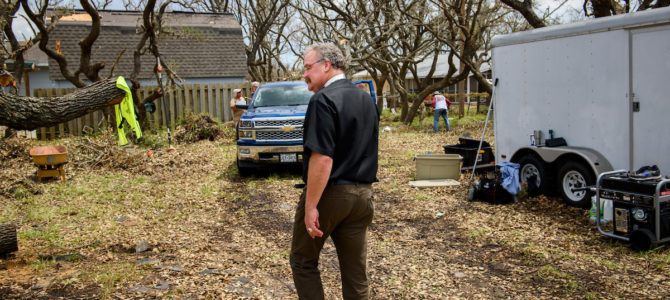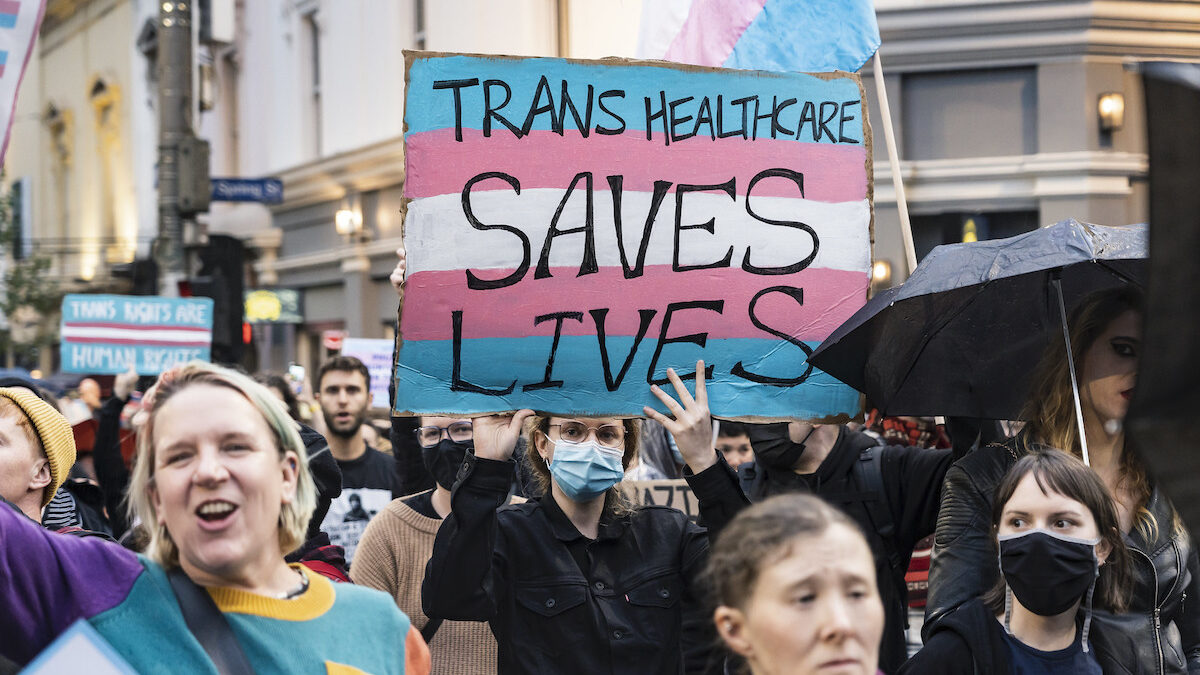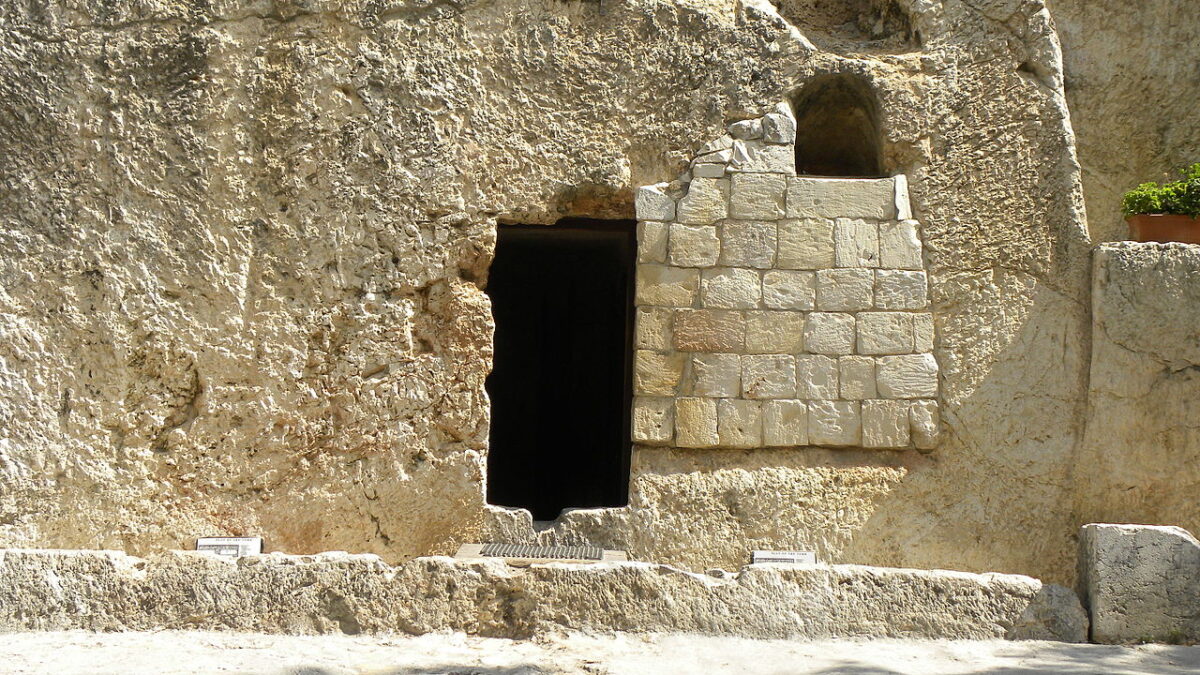
Within hours of Hurricane Harvey’s making landfall, relief efforts around the world had begun. First responders, local officials, churches, schools, civic organizations, and places of business leaped into action. In the days since Harvey released his fury on the Texas and Louisiana coasts, Americans have demonstrated the spirit that unifies much more than divides us, digging deep to share of their time, talents and treasure with those in need.
It has been a sight to behold, but it is not something that just happens. Such a response is the fruit of much preparation, organization, and groundwork, often going back years. The Lutheran Church—Missouri Synod, a two-million-plus-member Christian church body based in St. Louis, Missouri, with over 6,000 congregations around the world and missionaries in 32 countries, is no stranger to relief work. In the wake of Katrina, the LCMS was involved in restoring some 6,000 homes in East New Orleans. Christianity Today recently named the LCMS as one of several organizations the magazine recommends as “reputable, well-established . . . on the ground at the site of the disaster and ready to work.”

Coming Alongside At the Local Level
What is involved in mounting an effective response to disaster, one that makes a meaningful contribution without getting in the way of the work of first responders, community officials and volunteers?
According to LCMS President Rev. Dr. Matthew C. Harrison, the answer is to “come alongside” at the local level, supporting and enabling those who know best what the needs are:
It doesn’t happen because of the people here in St. Louis. We’re part of it, and we put our energies into this effort, heart and soul. But the great thing we have is local people. Just as we don’t go overseas and tell other churches and people what to do, we recognize that locals understand their situation, and solutions must be local. We come alongside them and assist them in their particular challenges.
To that end, as Harvey unleashed his worst, headed back out into the Gulf of Mexico and turned around to inflict even more devastation, the LCMS began responding to the disaster across the board. Fundraising efforts kicked into action at the congregational, district and national levels. An early assessment team deployed to Texas to see firsthand the situation on the ground. A semi-truck was filled with $65,000 worth of supplies such as generators and power washers to help with the initial cleanup. A volunteer registry was created, production began on resources to publicize the situation throughout the organization, and a task force was put into place to handle what promises to be a very long rebuilding process.

Training Volunteers Before Disaster Strikes
Key to responding swiftly and effectively in the face of disaster is having a structure that can be quickly mobilized and people who have been trained ahead of time. Says Rev. Dr. Ross Johnson, director of Disaster Response for the LCMS: “There is an enormous need to have groups that are trained before a disaster strikes. You never know when a tragedy is going to happen, and there’s nothing more helpful than to have people ready to go in at a moment’s notice.”

The LCMS offers a course called LERT—Lutheran Early Response Training—that instructs volunteers in what to do, and not do, in a disaster situation. To date, 15,000 volunteers have completed the training, which formally certifies them with the credentials for gaining access to controlled areas immediately following a disaster. Some of the work is physical (such as loading a truck or wielding a chainsaw), while some centers on human and spiritual care.
Johnson says the LCMS encourages districts (the next organizational level after national) and congregations to hold LERT events since the most effective and quickest responders come from the community. The more trained responders there are, says Johnson, the more “we are able to help not only LCMS Lutherans but everyone who has been affected by a natural disaster.”
The Best Responders Are Local
While trained responders are enormously valuable in the early response after a disaster, so are those who have not been trained but are simply ready and willing to meet the need as it arises. Johnson’s observation that the best responders come from the affected community is attested to by the relief effort currently playing out at Trinity Klein Lutheran in Spring, Texas. Trinity-Klein is one of the largest congregations in the LCMS, with an average weekly worship attendance of over 1400 people. During Hurricane Harvey, 45 homes belonging to Trinity members were flooded, including that of the senior pastor, Rev. Christopher Singer.
Yet despite how closely Trinity has been hit by Harvey, the congregation is at the forefront of providing assistance to the surrounding area. In the first week after Harvey hit, 400 volunteers worked over 16,000 hours. Some of those were not members of Trinity but people from the surrounding area who simply came asking how they could help. As floodwaters rose, they rescued 39 families from their homes, provided care to over 1400 people who came through their doors in need of aid (including 94 senior citizens rescued from an assisted living center), and temporarily sheltered 44 people.

In addition, Trinity has served around the clock as a relief station for first responders. The church has been designated by Harris County Precinct 4 as a hub for the HEB grocery chain’s flood relief efforts. Going forward, they will be partnering with several other LCMS churches, schools and organizations to continue providing relief.
Remembering Forgotten Small Towns
Meanwhile, southwest of Houston, the Coastal Bend area of Texas is also beginning the process of recovering from Harvey. The largest city in the region is Corpus Christi, but hardest hit were smaller towns like Rockport, Aransas Pass, and Refugio. The damage caused by Harvey’s first landfall was more wind than water-related, but it was no less devastating, with roofs torn completely off, buildings left in rubble, and utility services knocked out of commission. Some areas are still without water or power, with no estimate of when services will resume.
Rev. Dustin Beck of Trinity Lutheran in Corpus Christi has been on the frontline of the LCMS’s efforts to aid these smaller and more easily forgotten (at least by the news media) communities. It has been a local grassroots effort strongly fueled by social media. According to Beck, one of the greatest challenges in helping those who are suffering is that many of them don’t know how to help themselves. In the face of catastrophic loss, they have little or no insurance. Says Beck: “People are supposed to pull themselves up by their bootstraps, but these folks’ boots don’t have straps.”

Rev. Beck is partnering with other LCMS churches in the area as well as with the district and synod offices to try to provide some of those bootstraps. As in Houston, volunteers have turned out on a massive scale. Beck says the difficulty is not in finding manpower but sometimes in dispatching it. Volunteers may call to find out what the greatest need is, but by the time they arrive, that need may have changed. They may ask where to go to help with a particular task, but by the time they get there the location of the task may have shifted. “Everything is a moving target,” says Beck.
Of concern to anyone whose life has been touched by a disaster, whether as a victim or as a provider of aid, eventually the world will quit paying attention and move on. This is already beginning to happen where Hurricane Harvey is concerned. Yet the enormous task of rebuilding is not going to be completed for a very long time. It is here that organized relief efforts may play their most crucial role: when the masses of volunteers go back to their regular lives, the convoys of loaded semis begin to slow down, and when the initial tidal wave of money starts to let up—that is when a disaster response team is needed even more, continuing to “come alongside” in the arduous path that awaits.
‘This Community May Never Be The Same’
Beck observes that even when the physical cleanup and restoration is completed in the Texas Coastal Bend, the aftereffects will remain, as some people move away never to return, and businesses close never to reopen: “This community . . . may never be the same. Our congregation is committed to this area. We’ve made it our mission right now to make sure that they’re cared for and that they know we love them and Jesus loves them.”
At this writing, wildfires are raging in the western United States, and Irma, a Category Five hurricane, is poised to make landfall in the Caribbean and head for the southeast United States. LCMS Disaster Response is watching closely, ready to serve where and when the need arises. Says LCMS President Harrison:
“We have a blessing, and we have a duty. I’ve seen it so many times and in so many disasters: the Church comes alongside of people who are struggling and hurting. They have their own wounds bound up, and then they go right out and start helping others.”
There is little doubt that The Lutheran Church—Missouri Synod, and many other churches like it that have a heart for mercy, will be binding up wounds for years to come.









